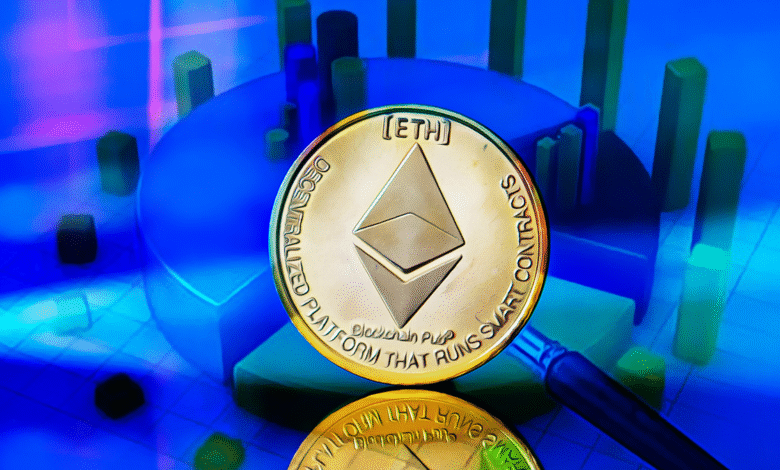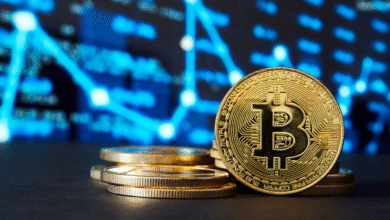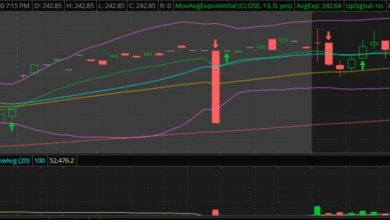Ethereum 1TS Initiative: Enhancing Security for Users

The Ethereum 1TS Initiative, or the Trillion Dollar Security Initiative, represents a bold commitment by the Ethereum Foundation to significantly enhance the security of the Ethereum blockchain. Recognizing the growing demand for robust blockchain resilience, this ambitious plan aims to address critical Ethereum security challenges that could potentially impact smart contract risks and decentralized finance platforms. With a focus on safeguarding high-value transactions, the initiative seeks to allow users to securely store significant assets on-chain, even exceeding $1 trillion within single smart contracts. Through a comprehensive evaluation of vulnerabilities across the entire Ethereum technology stack, the initiative aims to develop solutions that bolster security while maintaining user trust. This multi-phase approach not only prioritizes immediate enhancements but also strives to foster clear communication about Ethereum’s security practices in comparison to traditional financial systems.
The Ethereum 1TS Initiative, alternatively referred to as the “Trillion Dollar Security” project, lays out a strategic roadmap aimed at fortifying the Ethereum network against emerging vulnerabilities. With a keen focus on enhancing blockchain reliability and tackling the inherent risks associated with smart contracts, this initiative highlights the Ethereum Foundation’s commitment to developing a resilient framework for decentralized finance. This effort aims to cater to the needs of individual and institutional users by ensuring that substantial amounts can be securely stored on Ethereum’s blockchain. The roadmap will also scrutinize and address various security concerns across the platform’s infrastructure, paving the way for a more secure and trustworthy financial ecosystem. Ultimately, the initiative signifies a proactive stance in promoting Ethereum’s role as a cornerstone for the future of internet-based financial systems.
Understanding the Ethereum 1TS Initiative
The Ethereum Foundation’s announcement of the Trillion Dollar Security (1TS) initiative marks a significant step toward enhancing the security and resilience of the Ethereum blockchain. This three-part plan aims not only to secure high-value transactions but also to establish a framework facilitating the safe storage of digital assets. By targeting both institutional and individual users, the initiative addresses the pressing need for robust security measures in a world increasingly reliant on decentralized finance (DeFi). The overarching goal is to support a network where billions of users can confidently store and manage their cryptocurrencies.
At its core, the 1TS initiative recognizes the potential risks associated with smart contracts, a crucial component of Ethereum’s ecosystem. By systematically mapping these risks across the technology stack, from wallet user experiences to consensus protocols, the Ethereum Foundation is proactively setting the stage for a more secure blockchain environment. This initiative reflects a broader movement within the crypto space to prioritize security and transparency, especially as the Ethereum network continues to underpin complex financial transactions globally.
Phases of the 1TS Initiative: A Comprehensive Approach
The first phase of the Ethereum 1TS initiative involves a thorough mapping of security risks across Ethereum’s technology stack, ensuring a comprehensive understanding of potential vulnerabilities. This phase addresses critical issues such as blind signing and stake centralization, which can undermine user confidence and ecosystem integrity. By meticulously documenting these risks, the initiative aims to prepare stakeholders for informed discussions on blockchain resilience and security standards, aligning with the heightened vigilance required in today’s digital landscape.
Moving into phase two, the focus shifts to implementing actionable fixes that prioritize urgent issues identified in the initial mapping. The Ethereum Foundation has committed to addressing key vulnerabilities as they arise, a crucial step in fortifying Ethereum’s security posture. This phase may also involve collaboration with external security experts, emphasizing the initiative’s community-driven approach to identify gaps in security effectively. As Ethereum positions itself as foundational internet infrastructure, the need for ongoing enhancements to its security measures is more important than ever.
The Role of Security Experts in the 1TS Initiative
A notable aspect of the Ethereum 1TS initiative is the inclusion of leading security experts such as Fredrik Svantes, Josh Stark, and others, who bring a wealth of experience in protocol audits, decentralized finance security, and infrastructure hardening. Their involvement significantly enhances the initiative’s credibility and execution capability. With the landscape of smart contract risks and blockchain technologies evolving rapidly, the insight and expertise of these thought leaders provide a layer of assurance for Ethereum users that their financial transactions will be robustly protected.
Moreover, this collective effort underscores the importance of collaboration within the crypto community. By engaging with security professionals from various backgrounds, the Ethereum 1TS initiative fosters a broader dialogue about blockchain security, ultimately benefiting the entire ecosystem. This collaboration not only emphasizes a multi-faceted approach to overcoming potential challenges but also highlights the critical importance of security in building trust among Ethereum stakeholders and users.
Enhancing User Awareness of Ethereum’s Security Standards
Another vital component of the Ethereum 1TS initiative involves improving public communication regarding Ethereum’s security standards. Effective communication will empower users to understand the measures being implemented to safeguard their digital assets. By providing transparent comparisons between Ethereum’s security protocols and traditional financial systems, the foundation aims to enhance user confidence in blockchain technology. This educational effort is key to demystifying complexities surrounding Ethereum’s security practices and fostering a more informed user base.
By proactively sharing insights into the ongoing advancements in security protocols, the Ethereum Foundation not only builds trust within its community but also sets a benchmark for other blockchain projects. As decentralized finance continues to grow, users’ awareness of security standards will play a critical role in their adoption of such technologies. The initiative’s focus on transparency serves to fortify Ethereum’s position as a trusted leader in the cryptocurrency space and encourages responsible engagement with smart contracts and financial transactions.
Future Implications of the 1TS Initiative on the Ethereum Ecosystem
The future implications of the Ethereum 1TS initiative are profound, particularly as the initiative aligns with Ethereum’s long-term vision of becoming foundational internet infrastructure. As the landscape for digital currencies evolves, the focus on security will only become more crucial. The initiative sets the stage for a more robust framework that can sustain anticipated growth in users and applications, ultimately supporting Ethereum’s scalability and resilience in the face of emerging threats.
Additionally, the emphasis on addressing smart contract risks and enhancing security protocols will encourage more institutional investment in the Ethereum network. As security becomes increasingly paramount for users and investors alike, the 1TS initiative positions Ethereum as a competitive player in the rapidly diversifying cryptocurrency market. The focus on creating a secure and user-friendly environment ensures that Ethereum can attract a broader audience, driving innovation and adoption in decentralized finance and beyond.
Collaborative Efforts within the Ethereum Community
Collaboration is a cornerstone of the Ethereum 1TS initiative, as the Ethereum Foundation understands that tackling security risks is not a solitary effort. By engaging with external security experts and leveraging insights from various stakeholders in the Ethereum community, the Foundation aims to cultivate a dynamic environment conducive to innovation and problem-solving. This collaborative framework not only enriches the initiative but also ignites further discussions about best practices in blockchain security and resilience.
Such cooperation fosters a collective responsibility among developers, security professionals, and users, emphasizing the shared goal of ensuring a safe and secure Ethereum ecosystem. The open dialogue encouraged by the 1TS initiative can lead to groundbreaking advancements in understanding vulnerabilities and implementing robust defenses against potential threats. This approach underscores the essence of decentralized systems: a community-driven effort to fortify blockchain technologies through shared knowledge and expertise.
Risk Management Strategies in the 1TS Initiative
Risk management is at the heart of the Ethereum 1TS initiative, particularly as it addresses notable vulnerabilities that could jeopardize the integrity of the Ethereum network. The initial phase of mapping security risks is just the beginning of developing comprehensive management strategies. These strategies aim to identify, assess, and mitigate the risks presented by smart contract vulnerabilities, wallet design flaws, and centralization tendencies. Such thorough risk management efforts are crucial for maintaining user trust and blockchain stability.
In phase two, the initiative’s focus on implementing effective fixes aligns seamlessly with a proactive approach to risk management. Prioritizing urgent issues while also planning for long-term improvements creates a sustainable framework for ongoing risk assessment. This not only protects current users but also lays the groundwork for future growth in the Ethereum ecosystem. Learning from past risks and investing in preventive measures will be critical in preserving the security of educational finance and Ethereum as a digital asset management platform.
Institutional Adoption of Ethereum Security Standards
As the Ethereum 1TS initiative unfolds, its implications for institutional adoption of Ethereum security standards become increasingly evident. With an emphasis on enhancing resilience and addressing security concerns, the initiative targets a fundamental barrier that has previously restrained institutional players from fully engaging with Ethereum. By showcasing a commitment to security, the Ethereum Foundation paves the way for more entities to explore integration within decentralized finance models, expanding its user base significantly.
Institutional adoption also hinges on the transparency of security measures implemented by the Ethereum network. By comparing its protocols with those of traditional financial systems, the Foundation addresses the growing need for credible assurances from institutional investors. As Ethereum solidifies its security standards, it stands to gain credibility and trust among institutions, resulting in greater investments and heightened participation in the blockchain ecosystem.
The Evolution of Blockchain Security Post-1TS Initiative
The evolution of blockchain security post-implementation of the Ethereum 1TS initiative signifies a transformative chapter for all blockchain protocols. As Ethereum takes strides to enhance its security architecture, other blockchain projects are likely to follow suit, creating a ripple effect across the industry. The proactive steps taken by the Ethereum Foundation to address vulnerabilities set a precedent for comprehensive risk management strategies, inspiring similar initiatives across various blockchain networks.
Furthermore, as stakeholders from diverse sectors adopt and adapt the principles established by the 1TS initiative, a unified approach to blockchain security may emerge. This evolution could lead to increased cooperation between projects, sharing insights into best practices and mitigation techniques. Ultimately, the ripple effects generated by Ethereum’s commitment to security may contribute to a more resilient and secure overall blockchain landscape, encouraging adoption and innovation across the decentralized finance spectrum.
Frequently Asked Questions
What is the Ethereum 1TS Initiative and how does it enhance Ethereum security?
The Ethereum 1TS Initiative, introduced by the Ethereum Foundation, is designed to bolster Ethereum security by addressing key challenges within its technology stack. This initiative focuses on reducing smart contract risks and enhancing blockchain resilience, which is essential for facilitating high-value transactions in decentralized finance.
How does the Ethereum 1TS Initiative address smart contract risks?
The Ethereum 1TS Initiative addresses smart contract risks by mapping security vulnerabilities across Ethereum’s entire technology framework. This includes analyzing wallet UX and consensus protocols to identify issues like blind signing and dependency management gaps, thereby improving overall security for users and institutions.
Who are the leaders behind the Ethereum 1TS Initiative?
The Ethereum 1TS Initiative is spearheaded by Fredrik Svantes and Josh Stark from the Ethereum Foundation, along with a team of seasoned security experts including samezsun from SEAL, Mehdi Zerouali from Sigma Prime, and Zach Obront from Etherealize. Their collective expertise focuses on enhancing Ethereum security and decentralized finance.
What phases are included in the Ethereum 1TS Initiative?
The Ethereum 1TS Initiative consists of three phases: first, mapping and identifying security risks across Ethereum’s technology stack; second, implementing recommended fixes for critical vulnerabilities and planning for future upgrades; and third, improving public communication about Ethereum’s security standards to help users assess them against traditional finance systems.
Why is the Ethereum 1TS Initiative important for decentralized finance?
The Ethereum 1TS Initiative is crucial for decentralized finance as it aims to create a secure blockchain framework capable of supporting single contracts worth over $1 trillion. By enhancing Ethereum’s security, it facilitates trust and scalability for high-value institutional and individual users in the DeFi space.
What impact does the Ethereum 1TS Initiative aim to have on blockchain resilience?
The Ethereum 1TS Initiative aims to significantly improve blockchain resilience by systematically addressing and mitigating security vulnerabilities, ultimately reinforcing Ethereum as a foundational infrastructure for global financial systems and enabling more users to confidently store wealth on-chain.
How does the Ethereum Foundation plan to communicate Ethereum security standards through the 1TS Initiative?
As part of the Ethereum 1TS Initiative, the Ethereum Foundation plans to enhance transparency around Ethereum’s security standards. This includes creating resources that allow users to compare Ethereum’s security measures with those of traditional financial systems, fostering greater trust in blockchain technology.
Is there a timeline for the Ethereum 1TS Initiative’s implementation?
Currently, the Ethereum Foundation has not disclosed a specific timeline or budget for the Ethereum 1TS Initiative. However, they emphasize their commitment to working collaboratively with developers and researchers to address evolving security threats effectively.
What are the long-term goals of the Ethereum 1TS Initiative?
The long-term goals of the Ethereum 1TS Initiative include strengthening Ethereum’s position as reliable foundational infrastructure for internet finance, reducing smart contract risks, and enhancing overall Ethereum security to support a wide range of high-value applications in the decentralized finance ecosystem.
Can developers get involved in the Ethereum 1TS Initiative?
Yes, the Ethereum Foundation emphasizes collaboration with developers and researchers in the Ethereum 1TS Initiative. Engaging the community is crucial for implementing effective solutions to enhance Ethereum security and resolve identified vulnerabilities.
| Key Aspects | Details |
|---|---|
| Initiative Name | Ethereum 1TS Initiative |
| Objective | Enhance Ethereum’s resilience for high-value usage by institutional and individual users. |
| Focus Areas | Protocol and smart contract risks analysis. |
| Phase 1 | Mapping security risks across Ethereum’s technology stack, including UX, smart contracts, and protocols. |
| Phase 2 | Implementation of fixes prioritizing urgent issues and funding long-term upgrades. |
| Phase 3 | Enhancing public communication on security standards for user comparisons with traditional systems. |
| Leadership | Led by Fredrik Svantes and Josh Stark, with experts from SEAL, Sigma Prime, and Etherealize. |
| Goal Alignment | Support Ethereum’s goal to establish itself as foundational internet infrastructure. |
| Timeline & Budget | No specific timeline or budget disclosed; emphasizes collaboration with the community. |
Summary
The Ethereum 1TS Initiative is a significant effort aimed at strengthening Ethereum’s infrastructure to facilitate secure, high-value transactions for both individuals and institutions. By addressing critical security risks and improving communication regarding Ethereum’s standards, the initiative positions the blockchain technology to meet the rising demands of a global financial system. This forward-thinking approach is essential in ensuring that Ethereum can support the vast potential of billions of users securely, thereby reinforcing its role as a vital component of the digital economy.




